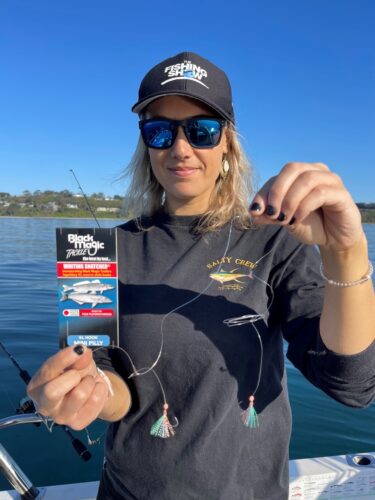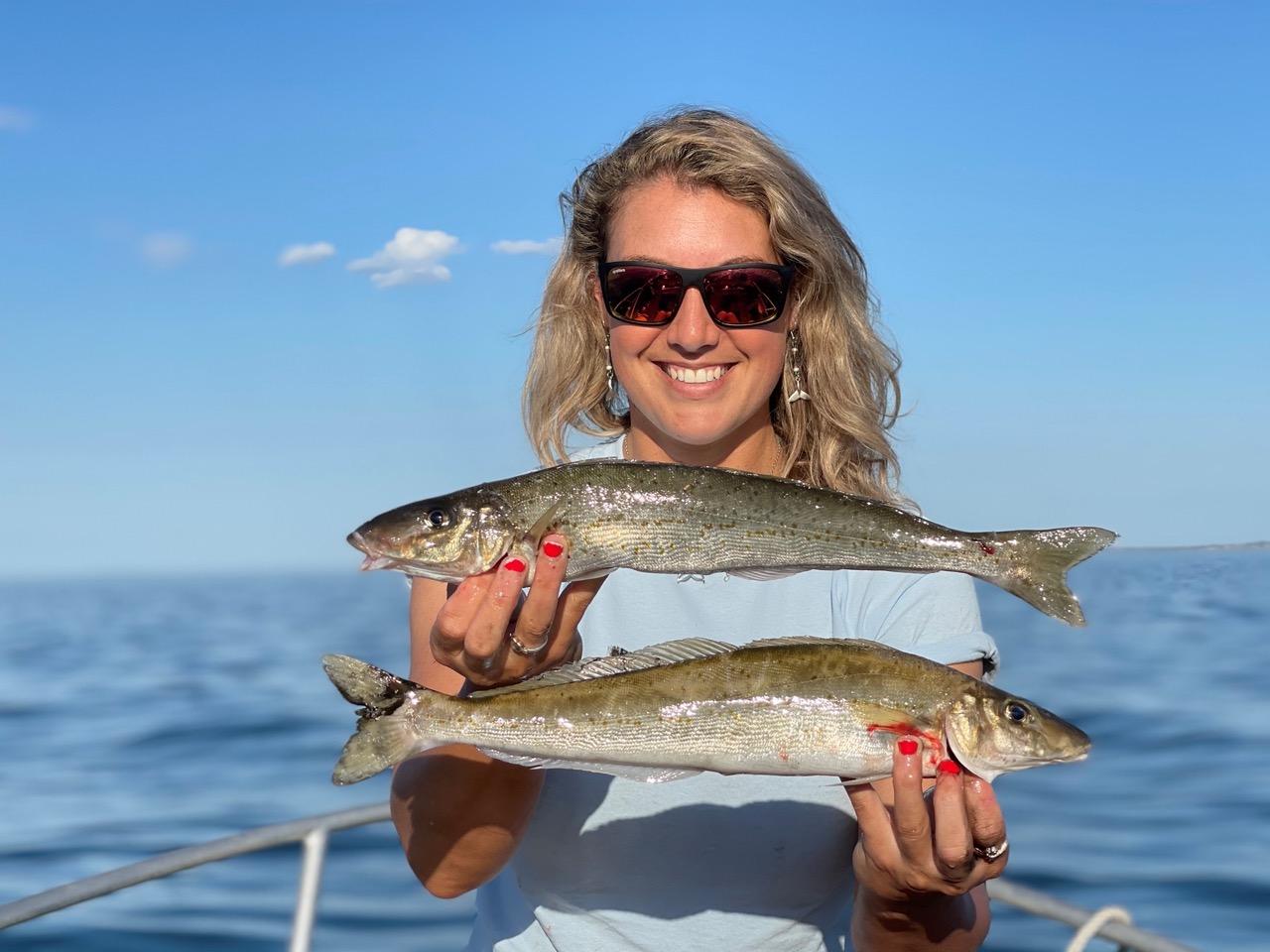King George Whiting, also commonly known as ‘KGWs’ are a very popular marine species and offer a great fishing experience for beginners and avid fishers alike. King George Whiting are typically targeted by anglers for their sporting capabilities and quality eating (Vitamin B, Magnesium, Protein and omegas). KGWs are endemic to southern parts of Australia- the lower parts of West Australia, New South Wales, Victoria and Tasmania.
In Victoria we have a legal size of 27cm and a bag limit of 20 per person. Other states have different rules and limits, so it’s best to look up the regulations for that area before you travel.Each location will have different size and quality of fish depending on where and when you are targeting them.
Whiting are commonly caught around 35cm but have been known to grow to a maximum length of 72cm and weigh up to 5kg! KGW reach sexual maturity at around 30-34cm in length, which equates to about 3-4yrs of age. They tend to spawn in water depths of up to 9 metres or in estuaries.Once hatched, they will be picked up by ocean currents and deposited into seagrass beds to grow until adulthood, where they then venture out into the deep continental reef shelves.
When and where to find them
KGW are an all day target for anglers.The ideal time to fish is during the two hours following a high tide as the tide runs out, or early morning or night-time post high tide. May through September tend to be the best months to catch them in Victoria, however they are about year round, although be prepared to have some slower fishing days on them. They do favour warmer temperatures during the winter, so use your sounder to find warmer pools.
Schools of KGW form in various sizes and occasionally bunk in with other species. Adults tend to be solitary and can generally be found in deeper bays, offshore gutters, broken bottom reefs, only occasionally coming back to shallow waters.
I have had success catching them at depths from 4mts to 18mts in the boat, but also land based off the beach, rocks and piers. I mainly fish off the boat in and around moorings, marinas and sand flats with reef patches. If you’re heading out in Port Phillip Bay, try the southern end and off the beaches.
Knowing KGW mainly hang out around seagrass beds, choose locations that have both reef and sand holes in the general vicinity. Anchoring up on the edge of the sandhole and dropping your bait down at the back of the boat should coax them off the seagrass and onto your line. Let your sinker hit the bottom, then one to two winds up to keep your bait out of the weed. Whiting also love choppy water as it provides cover for them to hide and also helps to disorient their prey.
Bait/lures to try
A KGWs typical diet includes worms, a variety of crustaceans, molluscs and fish. Whiting respond well to a range of baits and fresh is best if you can catch your own. If not, head in to your local tackle store or bait shop to find out what’s getting the bites in your area.
Too much bait or burley can draw in undesirable species, so only use a small amount to create some interest. I mainly use fresh squid strips as it holds on tight in strong tides and in rocky reef areas, and as a bonus, is generally good for more than one hookup. Other popular baits are pipi, mussels, crab, prawns and pilchard.
Lures and soft plastics have become quite popular and are great if you don’t have access to bait or don’t like bait fishing. They provide a fun challenge and are a good opportunity to learn new fishing techniques.
Gear
Equipment is a personal choice for the angler. It’s good to have a few different set ups to see what you find the most comfortable and likewise, the most successful.
I fish with a nibble tip, a light 2-4kg rod with 5kg mono line and a paternoster whiting pre-rig. A reel sized between 2500-4000 will get the job done. Light set ups are good for a challenge and with correct angling technique can handle the bigger models just fine.
As whiting share their home territory with other species, there’s a chance you’ll need a heavier set up to handle bigger fish like flathead. If you’re only chasing whiting, pull up anchor and try to find a bigger school hanging out on their own.
As far as rigs and techniques used it depends on a combination of what you’re comfortable using and the areas you are fishing. To find what works for you, test out different products and set ups, including paternoster or single running rig, circle hooks or long shank hooks. I like to be able to release fish quickly without harm, so opt for circle hooks that generally catch the fish in the corner of the mouth, resulting in less damage. Circle hooks can also improve your hookup rate, as they often self hook with a gentle lift of the rod. If you’re keen on striking to get the bite, try long shank hooks.
If you’re looking for a quick and easy alternative to making your own rigs, check out the pre-rigged kits that come set up ready to be tied onto your main line. Add a sinker if there isn’t one already in the kit, chuck on some bait and you’re ready to fish! If you’re fishing in fast flowing tide, you may need to swap the sinker out for a heavier option.

The author with an example of a whiting pre-rig
Our fisheries are strong and abundant, with KGW populations at a sustainable level if we keep doing the right thing. Remember you don’t have to catch the bag limit, just fish for what you need. It’s a great species and delicious so let’s keep looking after it!
If you’re looking for extra information on King George Whiting, you can access the VFA’s Recreational Fishing Guide here.

